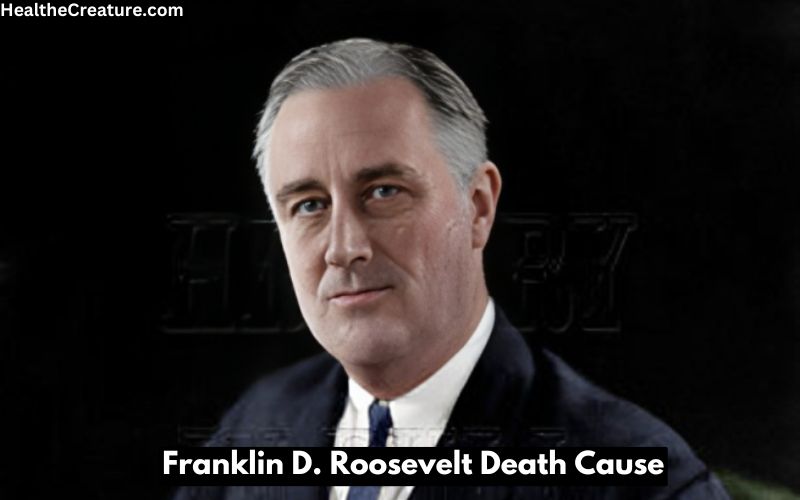Franklin Delano Roosevelt, often referred to as FDR, was one of the most influential leaders in American history. As the 32nd President of the United States, he served an unprecedented four terms from 1933 to 1945, leading the nation through the Great Depression and World War II. His sudden death on April 12, 1945, left the nation in mourning and marked the end of a remarkable political era. This article delves into the circumstances surrounding his death, its cause, and the profound impact it had on the world.
Quick Facts Franklin D. Roosevelt Death Cause
| Attribute | Details |
| Full Name | Franklin Delano Roosevelt |
| Date of Birth | January 30, 1882 |
| Date of Death | April 12, 1945 |
| Cause of Death | Cerebral Hemorrhage (Stroke) |
| Place of Death | Warm Springs, Georgia |
| Presidential Terms | 1933–1945 (Four terms) |
| Major Accomplishments | New Deal, WWII Leadership |
How Did Franklin D. Roosevelt Die?
Franklin D. Roosevelt’s death came as a shock to both the United States and the world. On the day of his passing, Roosevelt was at his personal retreat in Warm Springs, Georgia, known as the Little White House. Around midday, he was sitting for a portrait when he complained of an intense headache. Those present noted his sudden pallor and unresponsiveness. Dr. Howard Bruenn, his attending physician, was called immediately and diagnosed a massive cerebral hemorrhage. Efforts to revive Roosevelt were unsuccessful. At 3:35 PM, he was pronounced dead. His death ended a presidency that had spanned over a decade and brought the United States through some of its most challenging periods.
The timing was particularly significant, as World War II was nearing its conclusion. Roosevelt’s sudden departure created an emotional vacuum and underscored the vulnerability of even the most powerful leaders to the strains of their office. The shock of his passing also raised questions about the sustainability of extended leadership under such grueling circumstances, highlighting the immense burden borne by leaders during crises.
Cause of Death: Cerebral Hemorrhage
The official cause of Franklin D. Roosevelt’s death was a cerebral hemorrhage, more commonly known as a stroke. This occurs when a blood vessel in the brain bursts, leading to severe and often fatal brain damage. Roosevelt’s health had been deteriorating for several years, exacerbated by high blood pressure, arteriosclerosis (hardening of the arteries), and prolonged physical and mental stress. His declining health was evident during the later years of his presidency, with noticeable weight loss, fatigue, and a pale complexion. Despite this, his medical condition was largely kept from the public to avoid speculation about his ability to lead.
The pressures of guiding the nation through the Great Depression and World War II took a significant toll. Medical experts have since suggested that his death might have been preventable with modern treatment for hypertension, which was not well understood at the time. The lack of advanced diagnostic tools and effective medications for controlling high blood pressure left Roosevelt vulnerable to fatal complications. His death underscores the critical importance of managing stress and monitoring cardiovascular health, particularly for individuals in demanding roles.
Place of Death: Warm Springs, Georgia
Roosevelt died at the Little White House in Warm Springs, Georgia, a location he frequently visited for relaxation and therapy. Warm Springs was known for its therapeutic waters, which Roosevelt had sought to alleviate the effects of polio, a disease he had battled since 1921. He first came to Warm Springs in 1924 and eventually purchased the property, turning it into a retreat and a center for polio rehabilitation. The warm mineral waters were believed to have restorative properties, and Roosevelt credited them with improving his physical condition and mobility.
The Little White House became a place where Roosevelt could escape the rigors of his presidential duties. On the day of his death, he was in the company of close friends, staff, and artists working on his portrait. Today, the Little White House serves as a museum, preserving the memory of Roosevelt’s life and his final moments. Visitors from around the world come to pay their respects to one of America’s most iconic leaders. The setting reflects the personal struggles and resilience of a president who sought solace in a place that symbolized healing and hope.
Health Decline During Presidency
Franklin D. Roosevelt’s health had been a subject of concern for many years, although the extent of his ailments was not publicly disclosed. Throughout his presidency, he displayed remarkable energy and resilience, but by his fourth term, signs of exhaustion were apparent. Doctors closely monitored his condition, diagnosing him with severe hypertension and cardiac issues. His grueling schedule, combined with the immense pressures of leading the nation through global crises, took a heavy toll. By the time of the Yalta Conference in early 1945, Roosevelt appeared noticeably frail. Photographs and accounts from those who saw him noted his gaunt appearance and diminished vigor. Despite his declining health, Roosevelt’s determination to fulfill his duties never wavered.
His ability to inspire confidence and maintain leadership during such trying times remains a testament to his character. However, the secrecy surrounding his condition sparked debates about transparency in leadership and the impact of prolonged stress on decision-making. This period highlights the importance of balancing public service with personal well-being to ensure sustained effectiveness in leadership roles.
Public and Political Reaction to His Death
Roosevelt’s death sent shockwaves across the United States and the world. As the only president to serve more than two terms, he had become a symbol of stability and leadership during turbulent times. News of his passing was met with widespread mourning, with citizens gathering in public spaces to express their grief. World leaders also paid tribute to Roosevelt, acknowledging his pivotal role in shaping the post-war order. His death came at a critical juncture in history, with World War II in its final stages. Vice President Harry S. Truman, who succeeded Roosevelt, faced the daunting task of leading the nation to victory and shaping the post-war world.
Roosevelt’s passing highlighted the importance of succession planning and the physical demands of the presidency, leading to greater awareness of presidential health in future administrations. The national outpouring of grief underscored the deep connection Roosevelt had with the American people, reflecting his unique ability to connect with citizens during times of despair and uncertainty. His leadership style and policies left an indelible impact, further elevating the significance of his loss.
Roosevelt’s Legacy
Franklin D. Roosevelt’s legacy is one of resilience, vision, and transformative leadership. As the architect of the New Deal, he implemented programs that redefined the role of government in American life, providing relief to millions during the Great Depression. His leadership during World War II helped secure victory for the Allies and laid the groundwork for international institutions like the United Nations. Despite the controversy surrounding his extended presidency, Roosevelt’s impact on the United States and the world is undeniable.
His death marked the end of an era but solidified his place in history as one of America’s greatest leaders. The Little White House in Warm Springs stands as a poignant reminder of his humanity and the enduring influence of his leadership. Roosevelt’s ability to navigate unprecedented challenges with empathy and determination continues to inspire leaders worldwide. His vision for a more equitable society and a cooperative global community remains relevant, reflecting the timeless nature of his contributions. His legacy is a testament to the power of perseverance, innovation, and leadership in shaping history.
See Also: Leslie Jordan Cause of Death
FAQs
What was the official Franklin D. Roosevelt Death Cause?
Franklin D. Roosevelt died of a cerebral hemorrhage, commonly known as a stroke, on April 12, 1945. This condition involves the rupture of a blood vessel in the brain, leading to severe brain damage and ultimately proving fatal in Roosevelt’s case.
Where did Franklin D. Roosevelt pass away?
Roosevelt passed away at the Little White House in Warm Springs, Georgia. This retreat was his personal sanctuary and a place he visited often for rest and therapy for the effects of polio.
How long did Franklin D. Roosevelt serve as president?
Roosevelt served as president for an unprecedented four terms, from March 4, 1933, to April 12, 1945. He remains the only U.S. president to have served more than two terms.
What were the signs of Roosevelt’s declining health before his death?
In the years leading up to his death, Roosevelt exhibited signs of declining health, including significant weight loss, fatigue, and a pale complexion. Medical examinations revealed severe hypertension and arteriosclerosis.
Conclusion
Franklin D. Roosevelt Death Cause was a cerebral hemorrhage on April 12, 1945, marked the end of a transformative period in American history. His leadership during times of unprecedented crisis left an indelible mark on the nation and the world. While his passing underscored the physical toll of leadership, it also highlighted the enduring strength of democratic institutions. Roosevelt’s life and legacy continue to inspire future generations, making him a timeless figure in the annals of history.
His profound impact on social and economic policies, as well as his role in shaping the global order, underscores the importance of visionary leadership. The story of his life and untimely death serves as a reminder of the challenges and responsibilities inherent in leadership, inspiring continued reflection on the balance between duty and personal health. Franklin D. Roosevelt’s enduring legacy ensures his place as a pivotal figure in the narrative of American and world history.


